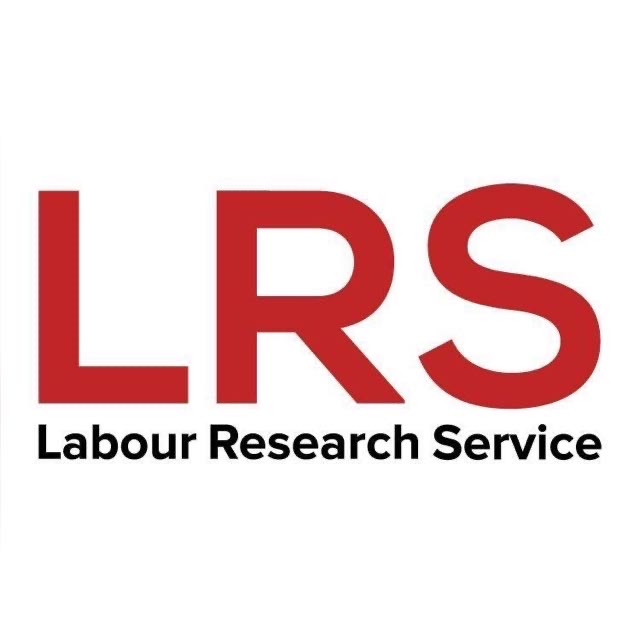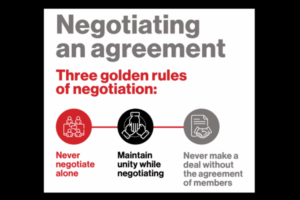Retrenchment is a process whereby the employer reviews its business needs in order to increase profits or limit losses, which leads to reducing its employees. Understanding retrenchment law is the base upon which worker leaders can build strategies for saving jobs and supporting workers when retrenchments are unavoidable.
Retrenchment law
Most workers’ rights in South Africa are covered by the Basic Conditions of Employment Act (BCEA) and the Labour Relations Act (LRA). Both acts deal with dismissals, but the LRA – specifically Sections 189 and 189A – deals with retrenchments.
According to Section 213 of the LRA, employers may dismiss employees based on operational requirements. However, the law also requires that employers must first consult with workers about the proposed retrenchments, should be able to prove there is a real “need” to retrench based on operational requirements, and should meaningfully try to identify ways to prevent or reduce the job losses.
The retrenchment negotiation process is started when the employer issues a written notice to the affected workers and their representatives (unions).
This notice must also be displayed on the company notice boards so that all workers can see it.
This notice must also be displayed on the company notice boards so that all workers can see it. The notice must indicate that the company is contemplating retrenchment (in other words, that it is not yet confirmed), and it must invite the workers and/or unions to consult on the proposal.
By law, this notice must disclose certain important information, such as:
- the reasons for the proposed dismissals.
- the alternatives that the employer considered before proposing the dismissals, and the reasons for rejecting each of those alternatives. The employer usually keeps the alternatives to a minimum. In order to save jobs, unions should determine whether companies have actually implemented those alternatives well. Unions should also add other alternatives to the list, using ideas in this guide and any other ideas which are appropriate.
- the number of employees likely to be affected and the job categories in which they are employed.
- the proposed method for selecting which employees to dismiss. This is often done on the Last-In, First Out (LIFO) principle in which the company proposes to retrench the newest employees first, but there are other models too.
- the time when, or the period during which, the dismissals are likely to take effect.
- the severance pay proposed. Companies usually simply offer the minimum outlined by the law: an amount calculated on paying one week for every year of service that a worker has worked (e.g. if you have worked for 10 years, you are paid the equivalent of 10 weeks of wages). Unions can seek more than this.
- any assistance that the employer proposes to offer to the employees likely to be dismissed.
- the possibility of the future re-employment of the employees who are dismissed.
- the number of employees employed by the employer.
- the number of employees that the employer has dismissed for reasons based on its operational requirements in the preceding 12 months.
Meetings are then held between the employer and the employees and/or unions to discuss the company’s proposals about retrenchment and determine the opportunities to save jobs.
Meaningful consultation
Section 189 of the LRA is clear that the employer and employees, and/or unions must conduct a meaningful and joint consensus-seeking process.
At a minimum, this process should attempt to:
1) Identify and implement steps that can be taken to avoid the loss of all the jobs. This is the first priority of consultation.
2) If not all jobs can be saved, it is important to identify:
- measures to minimise the number of job losses.
- methods to change the timing/date of the job losses.
- steps to prevent or reduce the bad effects of the loss of jobs on workers.
It is only once job losses are considered unavoidable that discussions should begin for:
- choosing methods for selection of employees to be dismissed;
- seeking agreement on the severance pay for dismissed employees; and
- seeking any other ways in which the hardship of workers can be minimised.
The employer is required to consider and respond in writing to proposals and matters raised by the employees.
The consultations and negotiations are supposed to be meaningful. This means the employer is required to consider and respond in writing to proposals and matters raised by the employees. It is useful for employees to raise as many alternatives as possible.
It is best for the employer to be transparent and open about any of the challenges they are facing. A lack of transparency – such as not sharing important information like company financials – prevents workers and unions from confirming the nature of the problems at the company, creates distrust, undermines meaningful consultation and can be a reason for unions to dispute the outcomes of retrenchments.
How long is a retrenchment process?
Section 189A of the LRA indicates that, for large retrenchments (above 50 employees), the services of the Commission for Conciliation, Mediation and Arbitration (CCMA) can be requested to facilitate consultation between employers and employees. It also indicated that such a process should take a minimum of 60 days and should include at least four consultation meetings.
The consultation process can be longer (or shorter) if agreed upon by employers and employees or unions. It is also possible to meet much more regularly with the company in parallel to meetings with the CCMA. On average, across all retrenchments which use mediation by the CCMA, it seems this can often help to save around 40% of jobs.
The LRA does not define a minimum time period for consultation for smaller retrenchments (under 50 employees). The law does require, however, that the discussions must be meaningful. In practice, companies often try to finish their consultations in two or three weeks. But in order to comply with the law, the consultation process must be long enough to allow employers and employees time to properly and fully discuss alternatives to the proposed retrenchment.
If you think it is still possible to find alternatives and you believe that consultation has not been meaningful, it is possible to consult for longer.
The outcomes of a retrenchment process
Retrenchment outcomes can be challenged if they are procedurally or substantively unfair.
The consultation process is supposed to be meaningful, BUT it is not required by law that employers and employees reach agreement. For this reason the LRA provides workers with tools – such as industrial action and legal processes (the CCMA or Labour Court) – to challenge retrenchment processes and outcomes.
Retrenchment outcomes can be challenged if they are procedurally or substantively unfair. In other words, if the correct processes have not been followed, or the reasons for retrenching are not strong, then there is a chance to contest the retrenchments legally.
Takeaway resource: A Complete Guide to Negotiating Retrenchment







